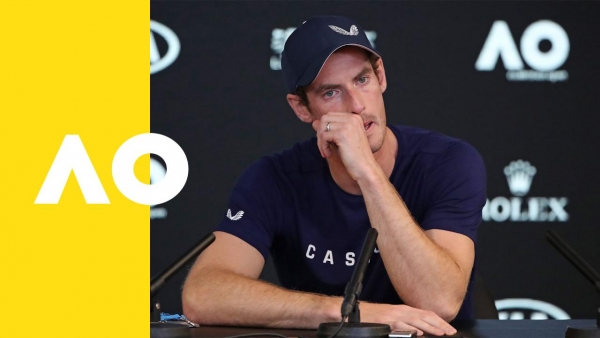Victory at an ATP 250 tournament by a player who has won three Grand Slam titles and been ranked No.1 is not, ordinarily, especially noteworthy.
But Andy Murray’s triumph in Antwerp on Sunday was hardly typical, and it resonated strongly and widely in the hours that followed.
Plagued by hip issues since 2017 and sidelined for a collective 16 months during that time, Murray overcame Stan Wawrinka 3-6 6-4 6-4 in a compelling final for his first ATP title since Dubai more than two-and-a-half years ago.
The fact he trailed Wawrinka 3-6, 1-3, 15-40 before staging a magnificent comeback-within-a-comeback made his 46th career title all the more sweet.
An emotional Murray wept after achieving something he thought as good as impossible as recently as January.
“It was because the past few years have been hard for me and tennis is something that I love doing and today was unexpected and yeah, there’s lots of reasons for me to be emotional today,” he said.
Murray has shed a considerable volume of tears in the past two seasons. And they have rarely been happy ones.
They came in a period defined by chronic injury, lengthy periods out of the game, and comebacks. And all of those elements have been accompanied by extreme uncertainty: would he be able to once again play the sport he loves? And even if he could, would he be able to do so at the highest level?
Fourteen months ago, Murray wept uncontrollably in his courtside seat at the tournament in Washington DC. He had just beaten Marius Copil in a three-hour epic finishing after 3am local time, a result sending him into the quarterfinals. It was just his third tournament into his first comeback from a hip injury increasingly and painfully apparent at Wimbledon 2017, one that kept him off tour for almost a year.
Yet his problems were not over. He withdrew from that Washington DC tournament, played just six more matches for the year, and shut down his season in September.
When he emerged again, at Australian Open 2019, he wept in a heartbreaking press conference as he admitted his hip troubles were not improving. Invasive hip resurfacing surgery was a possibility. Daily quality of life was the priority; he revealed he could not even put his shoes and socks on without pain.
“I can still play, but not to a level I'm happy playing at,” he admitted. “I think there's a chance of (Australian Open 2019 being my last tournament). Yeah, there's a chance of that for sure.”
He opted for that hip surgery immediately after the Australian Open. Another stint on the sidelines followed. Another comeback; first in doubles in June at Queen’s Club, then in singles in August at Cincinnati.
This time it was more fruitful.
Somewhat incredibly, he won silverware at that very first tournament at Queen’s, playing doubles alongside Feliciano Lopez. And when he came to properly test his body in the more punishing singles arena, he fared admirably.
He was competitive in first-round losses in Cincinnati and Winston-Salem, won two matches at a Challenger in Mallorca, then scored his first tour-level match win in Zhuhai in September. Then came a trip to the China Open quarterfinals – where he almost stretched world No.5 Dominic Thiem to a third set – and an entertaining three-set loss to 12th-ranked Fabio Fognini in the second round of the Shanghai Masters.
He might not have been winning those matches, but the level he produced against the game’s top players was illuminating.
“Once I actually started playing singles matches again, I could see there was something there, I might be able to be competitive and stuff,” Murray said.
“If I could improve my agility, my movement around the court, I could start asking the question, ‘Why not? Why shouldn’t I be able to compete?' I can still hit the ball the same as I did before. I’m able to serve better than I was the past couple of years.
“I made the quarters of (2017) Wimbledon when I was pretty much on one leg … So I was like, 'If I could get my leg strong again and get the movement back, I’m in a different spot.'”
Then came Antwerp, a magical week finishing with three consecutive three-set victories, first over Copil – a less emotionally-draining affair this time – then Ugo Humbert, and finally, over Wawrinka.
“Before the match I was pretty nervous and I didn’t feel prepared really to win… because I wasn’t expecting it,” Murray said.
“When I was out there, I wasn’t ahead at all until right at the end. Had I had a lead maybe I would have found it more difficult but because I was always playing from behind the whole time, I got that break right at the end.
“I just thought it would take longer to get to this point. I thought it would take longer for sure. But obviously I’m happy that it hasn’t.”
Murray languished outside the top 500 at the beginning of October. By the time he arrived in Antwerp, he had improved to No.243. Now, he is projected to rise to world No.127.
The 32-year-old is moving firmly back in the direction of top spot, where he resided before all of his troubles began.
